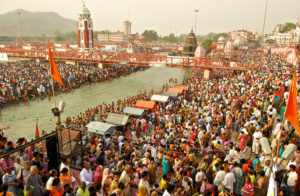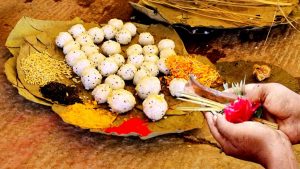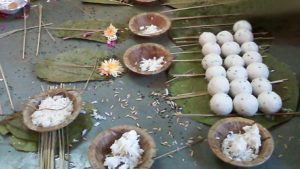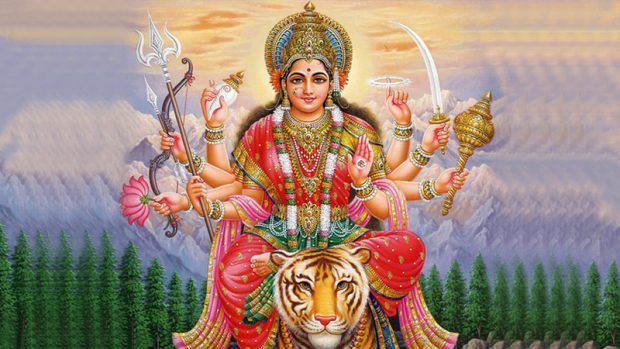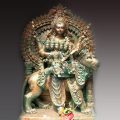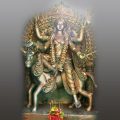Navrathri- Types and Significance
Navratri has been derived from two words—”Nav” + “Ratri”, which means “nine nights” in English. This festival is prevalent throughout India, but it is more prominent in the state of Gujarat and Bengal. It is celebrated to express their devotion to the goddess of power, Durga. The worship of the goddess Durga continues for nine days. Each day, a different form of the goddess is worshipped. Following the nine days of rituals and worship, the 10th day is celebrated as Dussehra, which is also known as Vijay- Dashmi. It is celebrated to mark the victory of mythical King Lord Rama over the King of Sri Lanka, Ravana.
Sharad Navratri 2016 Dates
- Navratri Day 1 – October 1, 2016 – Ghatsthapana – Navratri Begins
- Navratri Day 1 – October 2, 2016 – Chandra Darshan (Tithi is repeated)
- Navratri Day 2 – October 3, 2016 – Sindoor Tritiya
- Navratri Day 3 – October 4, 2016 – Varad Vinayak Chaturthi
- Navratri Day 4 – October 5, 2016 – Upang Lalita Vrat – Lalitha Panchami
- Navratri Day 5 – October 6, 2016 – Saraswati Awahan
- Navratri Day 6 – October 7, 2016 – Saraswathi Puja (western parts of India)
- Navratri Day 7 – October 8, 2016 – Saraswathi Balidan – Maha Lakshmi Puja (western parts of India)
- Navratri Day 8 – October 9, 2016 – Mahashtami – Annapoorna Parikrama – Saraswati Visarjan – Mahanavami fasting
- Navratri Day 9 – October 10, 2016 – Mahanavami
The tenth day is celebrated as Dasara or Vijaya Dashami.
Vidyarambham in Kerala is on October 10, 2016
Chaitra Navratri 2016 Dates
Chaitra Navratri: April 8, 2016 to April 16, 2016
On both occasions, during Chaitra and Sharad Navratri, nine forms of Goddess Maa Durga – Shailputri, Brahmacharini, Chandraghanta, Kushmanda, Skanda Mata, Katyayani, Kalratri, Maha Gauri and Siddhidatri are worshipped by the devotees. Chaitra Navratri festival will start from Friday, 8th April 2016 and will be celebrated till 16th April 2016 and Sharad Navratri dates for year 2016 are from October 1, 2016 to October 10, 2016. Devotees worship the nine incarnations.
The celebrations and worshipping styles are different in every state of India but the devotion is the same. It is celebrated widely in every part of India with great enthusiasm with a different name of Goddess, like in Gujarat devotees worship as Goddess Jagdamba while in West Bengal it is named as Durga Puja. In Kolkata people erect huge Pandals at various places for Durga Puja and set up great idols of Mata Durga for worship. In Gujarat, Dandiya and Garba are the two popular dance forms which are performed by the people during Navratri festival.
Why Nine Nights & Days?
Navaratri is divided into sets of three days. The idea is to worship different aspects of the Supreme Goddess. On the first three days, the Mother is invoked as Durga to destroy our impurities, vices and defects. The next three days, the Mother is adored as a giver of spiritual wealth, Lakshmi, who is considered to have the power of bestowing on her devotees the inexhaustible wealth. The final set of three days is spent in worshipping the mother as the goddess of wisdom, Saraswati. In order have all-round success in life, we need the blessings of all three aspects of the divine mother; hence, the worship for nine nights.
Navadurga – The nine forms of Goddess Durga
According to Vedic scriptures, Goddess Durga is a symbol of power. She is worshipped in nine different forms and is therefore termed Nava-durga. Each manifestation of Durga is worshipped with full devotion.
- Shailputri (Daughter of the Himalayas)
2. Brahmacharini (One who observes the state of celibacy doing penance)
3. Chandraghanta (One who bears the moon in her necklace )
4. Kushmanda (the creator of the universe)
5. Skandmata (The mother of Skanda, Karttikeya, born out of her powers)
6. Katyayani (The daughter of sage Katyayana, who incarnated to help the Devas)
7. Kalaratri (black as night, destroyer of Kali)
8. Mahagauri (the wife of Lord Shiva, doing great penance)
9. Siddhidatri (Provider of Siddhis, giver of mystic powers)
Significance of Navratri
Navratri symbolises the victory of good over evil – Goddess Durga slaying Demon Mahishasura and Lord Rama killing Ravana. This is constantly taking place in human hearts and the nine-day Navratri Vrat gradually prepares a devotee to merge with the Brahman. The nine-day Navratri vrat slowly annihilates the Mahishasura in us and help us to realise that we are part of Brahman – the supreme spirit present in all animate and inanimate. Equally, in the fight against evil tendencies like ego, anger, lust and other animal instincts make us weak and a person too faces ups and downs. The destructive aspect of Mother Goddess symbolically represents the fierce commitment to win over the evil tendencies.
When a person gradually gains victory over evil tendencies, there is a void or emptiness. If left empty, the new found victory over evil tendencies will be lost soon. Therefore, this void should be filled with spiritual wealth. But still the true knowledge is elusive – an individual has not attained true knowledge. This is because many feel Goddess Durga and Goddess Lakshmi is outside and not within. Goddess Durga and Goddess Lakshmi remain supernatural forces. This is ignorance. The supreme wisdom is still lacking. Goddess Saraswathi is worshipped to gain this supreme wisdom.
Finally, on the tenth day the supreme wisdom dawns in a devotee. He/She realizes that Goddess Durga, Goddess Lakshmi and Goddess Saraswathi are nothing but the supreme power manifested in different ways. Then the person moves a step ahead and realizes the ultimate truth that he/she is nothing but Brahman and that life is continuity.
Reach us to be a part of our whatsapp spiritual reminder group
